Implants
Een implantaat is een kunstwortel die in de kaak wordt geplaatst en uw natuurlijke tandwortel permanent vervangt.
Een implantaat is een kunstwortel die in de kaak wordt geplaatst en uw natuurlijke tandwortel permanent vervangt.
You may have lost one, several, or even all of your teeth due to various circumstances. In that case, you can opt for implants. This provides the most natural appearance and feels like your own teeth. The advantage is that an implant preserves your remaining teeth and molars. With a conventional bridge, the surrounding teeth are often filed down. With an implant, your teeth and molars remain intact. An implant replaces the root in the jaw and stimulates the jawbone, helping maintain the contour of your jawline and keeping your gums healthy.
You can eat anything again
You can smile brightly again
You can articulate clearly again
It feels like your own teeth
It stimulates the development of your jawbone
It keeps your gums healthy
You get your natural appearance back
You feel good and healthy!
An implant is an artificial root that is placed in the jaw and permanently replaces your natural tooth root. It looks like a kind of screw and is made of titanium, a body-friendly material to which bone can easily attach. The implant serves as the foundation for a crown, bridge, or denture.
An implant is an artificial root that is placed in the jaw and permanently replaces your natural tooth root. It looks like a kind of screw and is made of titanium, a body-friendly material to which bone can easily attach. Since January 2017, we have been working with zirconium implants at our clinic for specific indications, making us one of the first clinics in the Netherlands to offer this. Zirconium is a biologically compatible ceramic material for people who prefer as little metal in their mouth as possible. The implant serves as the foundation for a crown, bridge, or denture.
For a long-lasting and successful implant treatment, good oral health is essential. The following pre-treatments may be necessary to achieve this:
Removal of cavities, gum pockets, or other oral diseases
Bone augmentation
An implant must be placed in a physiologically optimal position to absorb chewing forces and transfer them to the bone. If there is insufficient bone available, your dentist has several options to augment the bone and create a stable foundation.
Example of Bone Augmentation Before Implantation
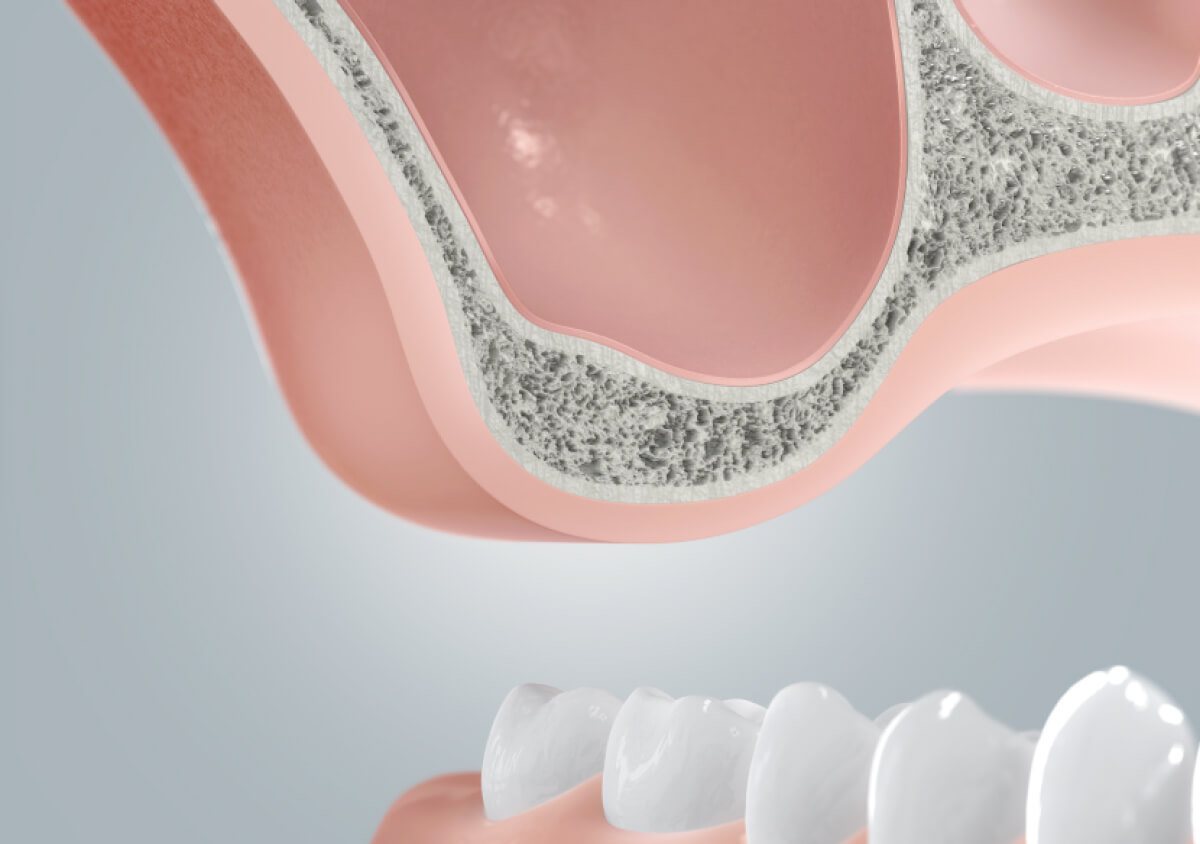
In the area of the maxillary sinus, the bone in the upper jaw often loses significant height. To create a sufficiently stable base for implant placement, the bone can be augmented using special techniques with replacement materials.
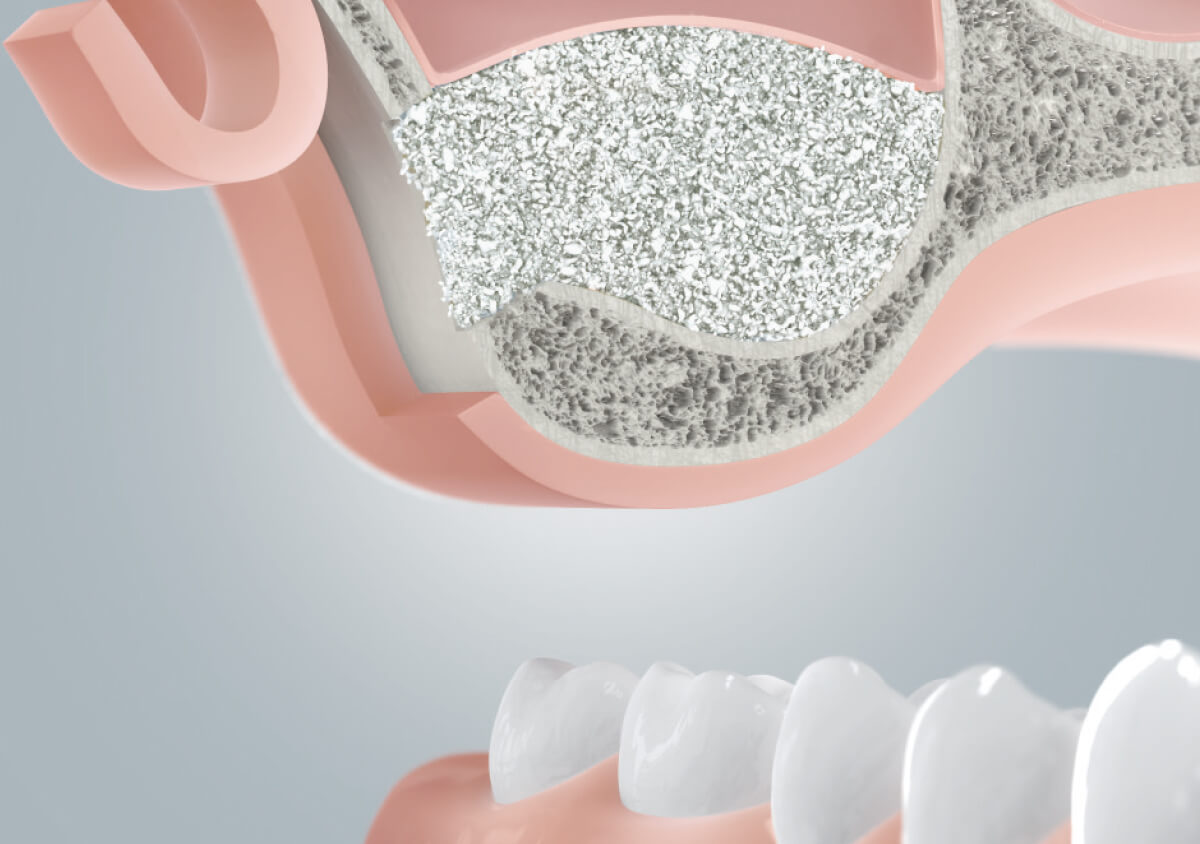
Bone augmentation in the upper jaw: The mucosa of the maxillary sinus is lifted, and the cavity is filled with bone substitute material. This procedure is called sinus floor elevation. After the augmentation, there is sufficient bone available to support an implant.
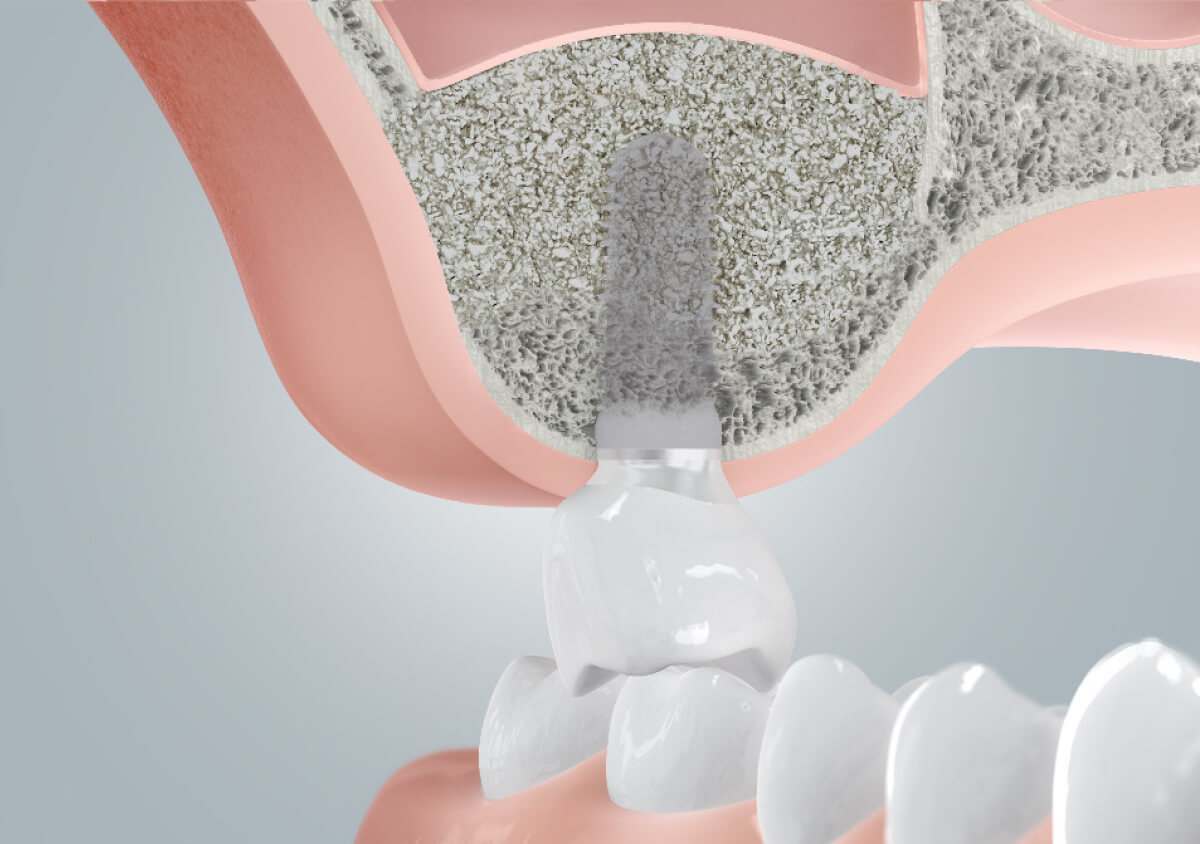
The bone substitute material is converted into bone through biological processes, providing a foundation for an implant restoration that is stable in the long term.
Whether bone augmentation or soft tissue treatment is needed depends on your individual situation as assessed by your dentist. Bone replacement material is often used when there is significant bone loss or severe gum recession. In collaboration with BioHorizons, Camlog offers not only bone substitute materials but also scientifically validated biomaterials such as the soft tissue matrix NovoMatrix™. This promotes healthy, strong, and aesthetic gum tissue around the teeth or implants.
Example of bone augmentation during implantation:
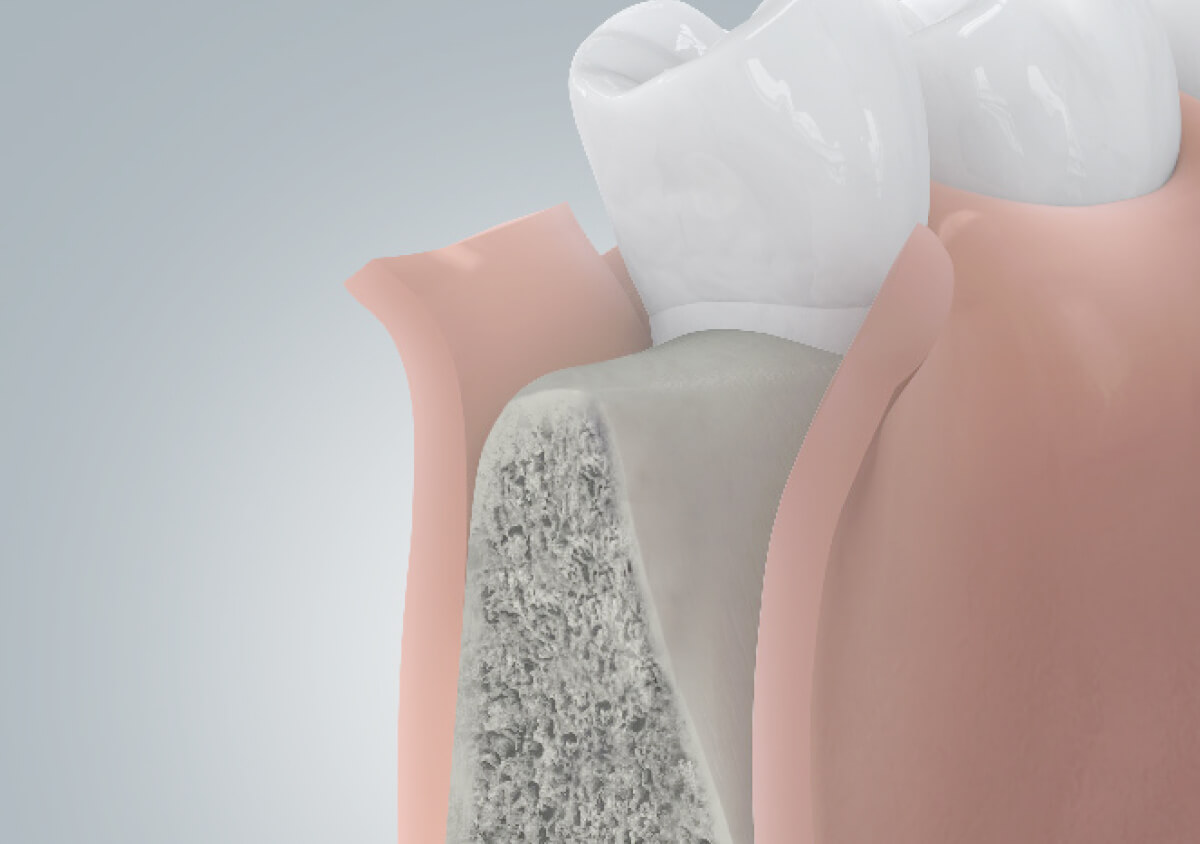
The missing bone volume must be increased in order to anchor the implant stably in the bone.
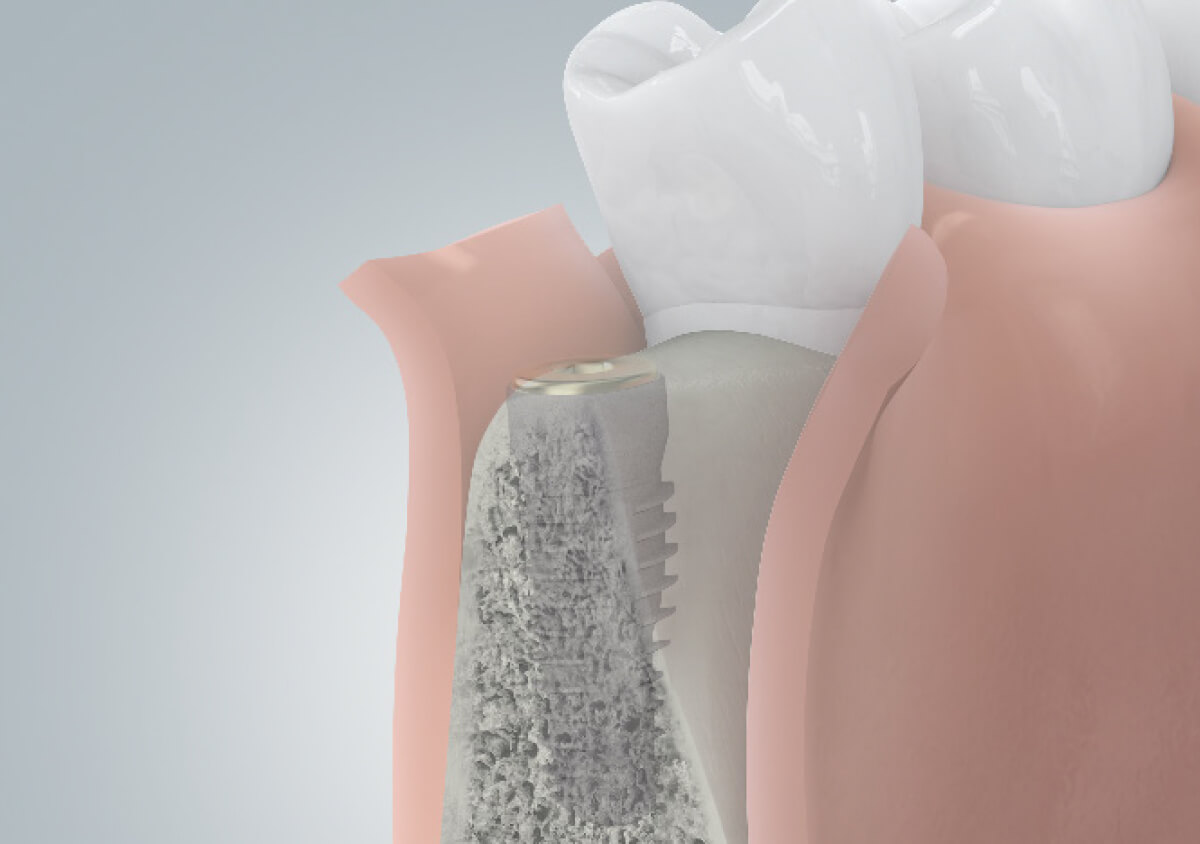
If there is minimal bone loss, the bone augmentation can be performed simultaneously with the implant placement. This saves you from an additional surgical procedure.
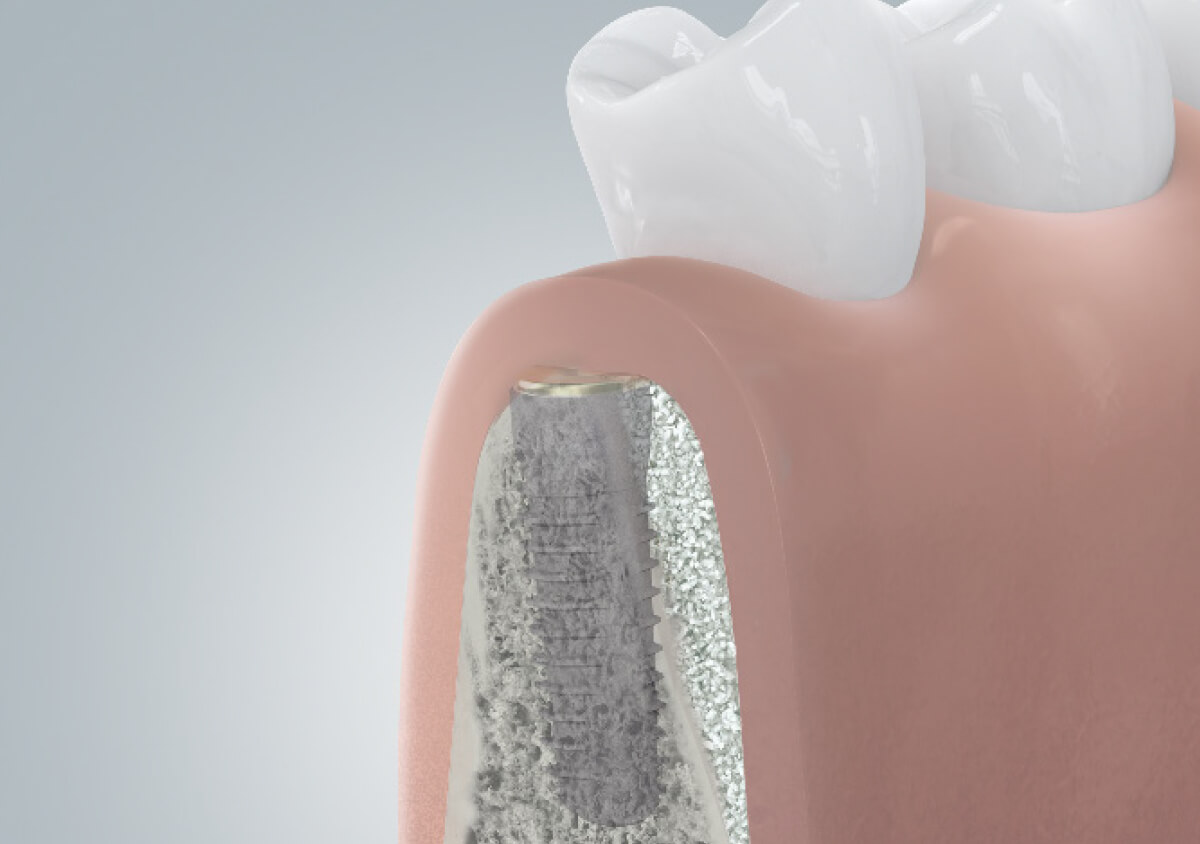
The replacement material transforms into stable bone during the healing period of the implant.
Modern anesthesia and implantation techniques ensure that the procedure goes as smoothly as possible. The time required for the procedure depends on the number of dental implants and your individual situation.
The first stable connection with the bone occurs as soon as the implant is placed. In the weeks following the placement, bone growth cells attach to the surface of the implant. This process is called osseointegration.
After the implant is placed, your practice team will provide you with your personal Camlog implant passport. The passport contains the Camlog implants used in your case, and all biomaterials used are traceably documented.
After implantation, it takes a few months for the bone cells to attach to the dental implant and for the healing to occur. Until your new teeth are fabricated by the dental technician, you may receive a temporary restoration if needed.
To achieve the best possible functional and aesthetic result, it may be necessary to use temporary provisions. Depending on your situation and individual needs, various implant restorations are possible: a single tooth, a bridge, or a full set of teeth in the upper and lower jaws. Your dentist will discuss this with you. Your new restoration will be placed once the function has been tested and the aesthetic impact has been checked. Your new teeth are now fully functional and can be used for chewing.
Example of bone augmentation after implantation
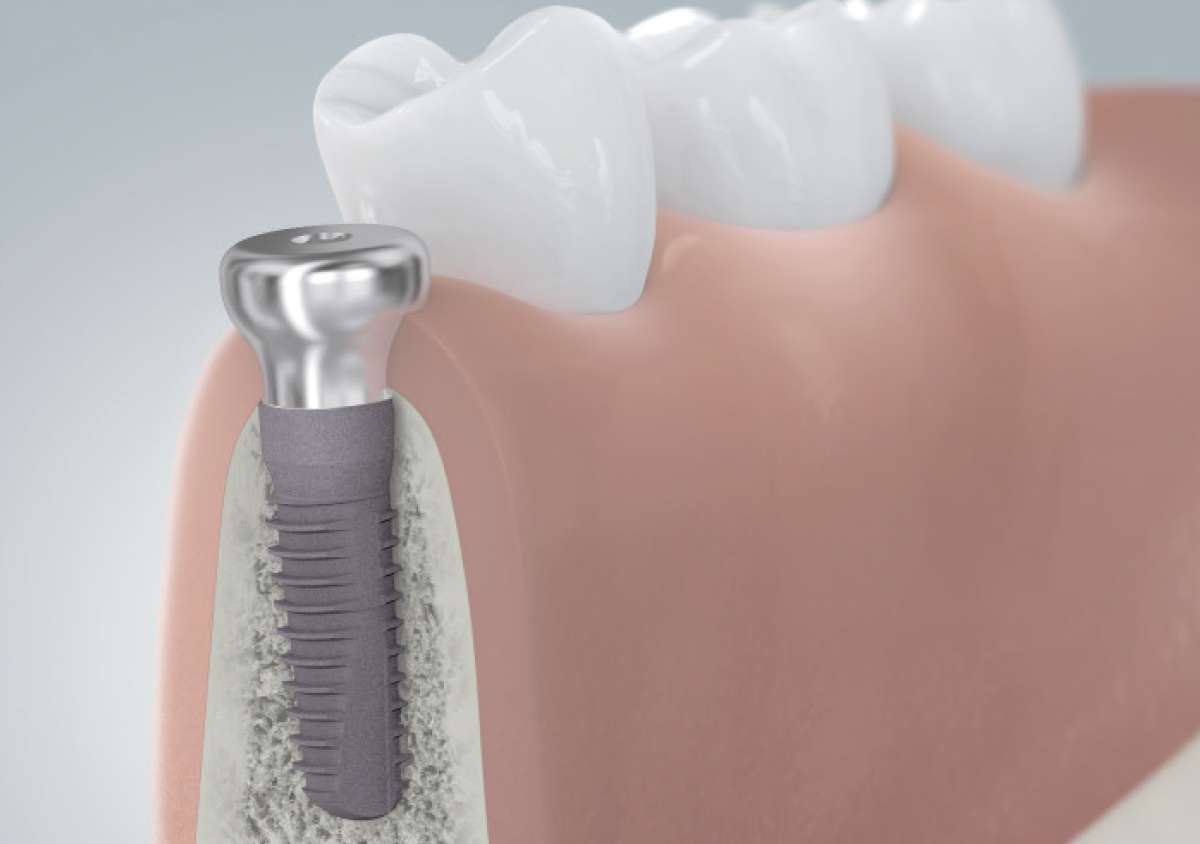
Shaping the gum for a natural-looking treatment result.
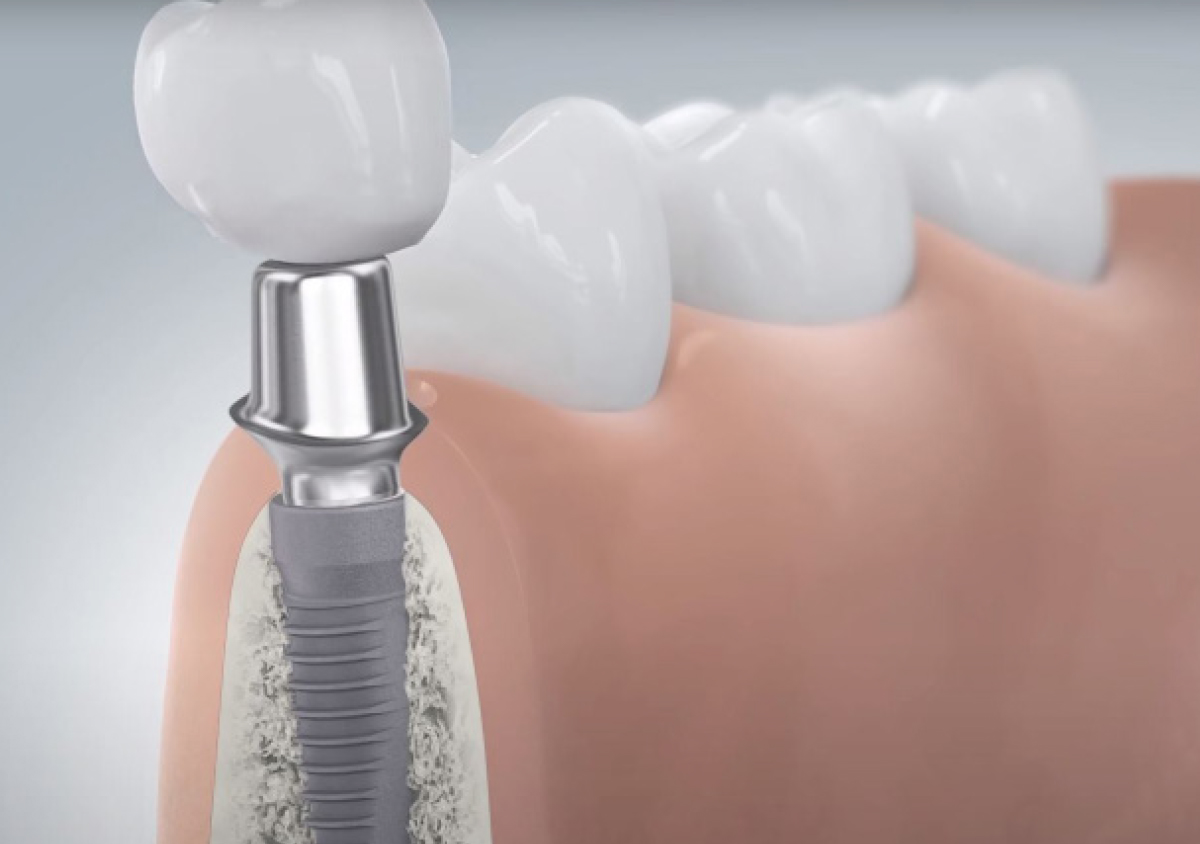
The abutment is placed in the implant so that the crown can be attached to it.
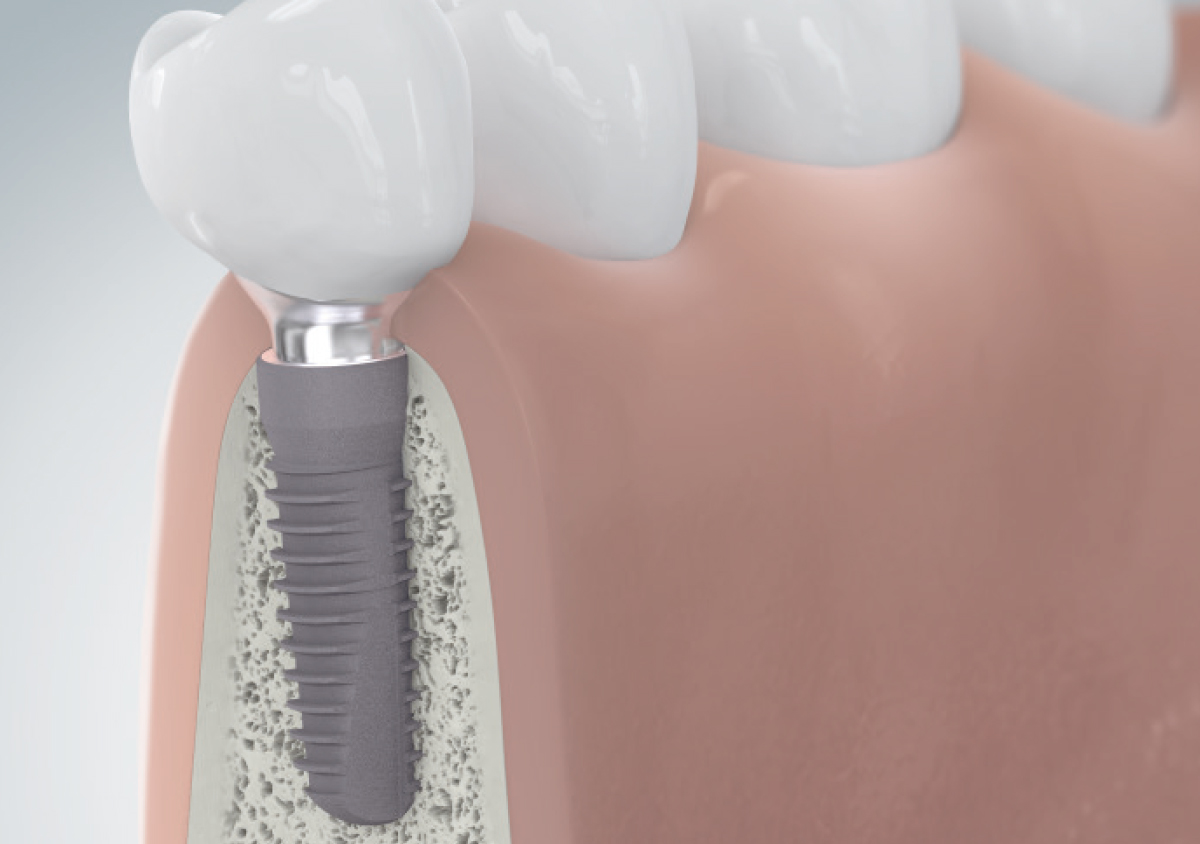
The final implant restoration with an example of a single tooth reconstruction.
Dental implants follow the same care rules as natural teeth. In addition to your daily oral hygiene with a toothbrush and other tools to clean between your teeth, professional dental cleaning (PDC) at the dental practice is the best investment to ensure the longevity of your dental implants. This guarantees the success of your “investment” in the long term and protects your teeth and gums from inflammation.
Your practice team will advise you on caring for your dental implants, oral care products, and their proper use, as well as ensure your regular checkups. You’ll have more than one reason to wear your smile with pride.
After the treatment, we ensure that you experience minimal post-treatment pain. You will be provided with painkillers, and you can always call us. Our practice finds that most people experience little to no pain after the procedure. They are relieved that it was much easier than expected. We would like to see you again after a month for a checkup.
You can choose to have the aftercare performed by your dentist or, with a referral from your dentist, you can have it done by us. In this case, we would like to see you again after one month, one year, three years, and five years after the implant placement. We will also provide you with instructions on oral hygiene. We will check the implant and take an X-ray to ensure that the components are properly aligned. If your dentist does not have the necessary equipment, you can be referred to us. The warranty from us and the supplier applies only if you have attended the checkups and as long as the implants and the restoration are made with original components.
Even with implants, daily oral hygiene and regular visits to the dentist remain important. If the gums become inflamed and recede, implants, just like regular teeth, can become loose.
All amounts are excluding the crown/bridge/frame/prosthesis. These costs will be charged by your dentist.
Prices effective from January 1, 2025:
Implants are only reimbursed in cases of:
- A severely resorbed and completely edentulous jaw
- Congenital abnormalities
- Reconstructive treatment after facial trauma and oncological surgery
A common misconception, even among health insurance staff, is that implants are always covered when authorization is requested or after submitting a treatment plan. Even if authorization is granted by the insurer, your personal contribution can range from €200 to €500, in addition to your own deductible of €385.
| Costs of the first consultation | ||
| Consultation | ||
| X-ray | (code 239465 and 239462) | € 134,52 + |
| € 134,52 | ||
| Placement of First Implant | ||
| Placement of first implant | (code 238060) | € 515,50 + |
| Materiaal costs | (code 238062) | € 404,40 + |
| € 919,90 | ||
| Costs for each additional Implant | ||
| Each additional Implant in the same jaw | (code 235021) | € 280,26 + |
| Materiaal costs | (code 238062) | € 404,40 + |
| € 684,66 | ||
| Costs for each additional Implant | ||
| Exposure of the tooth | (code 238063) | € 157,51 + |
| € 157,51 | ||
| Costs for uncovering of implant(s) (in case of second phase) | ||
| Exposure of the tooth | (code 238063) | € 157,51 |
| X-ray after placement | (code 239465 and 239462) | € 134,52 |
| Additional diagnostics and oral surgical procedures for the purpose of implantology | ||
| Bone grafting per jaw half | (code 234070) | € 336,22 |
| Sinus floor augmentation per jaw quadrant | (code 234012) | € 777,23 |
| X-ray (X-OPG) | (code 239465 and 239462) | € 134,52 |
| 3D X-ray (CBCT) | (code 239472 and 239475) | € 250,01 |
Implants are only reimbursed in the following cases:
- a severely atrophied and completely edentulous jaw
- congenital abnormalities
- reconstructive treatment after facial trauma or oncological surgery
A common misconception, even among health insurance staff, is that implants are always reimbursed when authorization is requested or after submitting a treatment plan. Even if authorization is granted by the insurer, your personal contribution may range from €200 to €500, on top of your excess of €385.
When do consultations and diagnostics for (non-insured) care not fall under basic insurance?
Sometimes, a consultation (the appointment with the doctor) and diagnostics (the examination by the doctor) only result in 'non-insured care.' This is especially the case when dental root implants are performed for a non-edentulous patient. Non-insured care occurs when, in the insurer's view, it is considered 'medically unnecessary care.' This care falls outside your basic insurance, and you will need to pay for the consultation and diagnostics yourself unless you have supplemental insurance. Depending on how you are insured, the medically unnecessary care may be partially or fully reimbursed by this supplemental insurance.
If insured care follows after a consultation and diagnostics, the consultation and diagnostics can be covered by basic insurance. The condition is that a valid referral from your dentist (or, in some cases, your GP) is required for this care.
Explanation
The Healthcare Institute of the Netherlands (Zorginstituut Nederland) states that if it is clear in advance that it will be non-insured care, then this also applies to consultations and diagnostics regarding that care. For example, if a patient is referred to determine if implants are possible and no special circumstances are present, such as a severely reduced edentulous jaw or missing front teeth (due to an accident or developmental disorder), the consultation and diagnostics cannot be covered by basic insurance. In this case, you will receive a bill that may be eligible for reimbursement through your supplemental dental insurance. The description on the invoice, for the consultation combined with diagnostics (in the form of an X-ray), will include the NZa codes (NZa = Dutch Healthcare Authority) 239462 and 239465 (for a total of €134.52). This bill will typically be charged to you by the hospital, and the hospital will not submit it to the insurer. For a few insurers (e.g., CZ), the invoice will be sent via the hospital to the insurer, and a settlement will occur based on any applicable supplemental insurance.
If you have supplemental dental insurance, you may be eligible for partial reimbursement for the implant treatment based on this. This means you will need to pay the invoice first and then submit it along with the specification to your insurer. The insurer will handle it according to the applicable policy terms. The oral surgeons are not involved in this process.
Please note that everyone has an excess of €385 or higher (you choose the amount of your excess).
This estimate includes the costs for placing the implants and any additional oral surgical procedures related to implantology (based on the current Dutch Healthcare Authority (NZA) rates). It also includes the follow-up check after 2-3 weeks and the check after 8-10 weeks.
In the case of a two-phase treatment, where the implants need to be exposed, the X-ray and any check-up after 1-2 weeks are included.